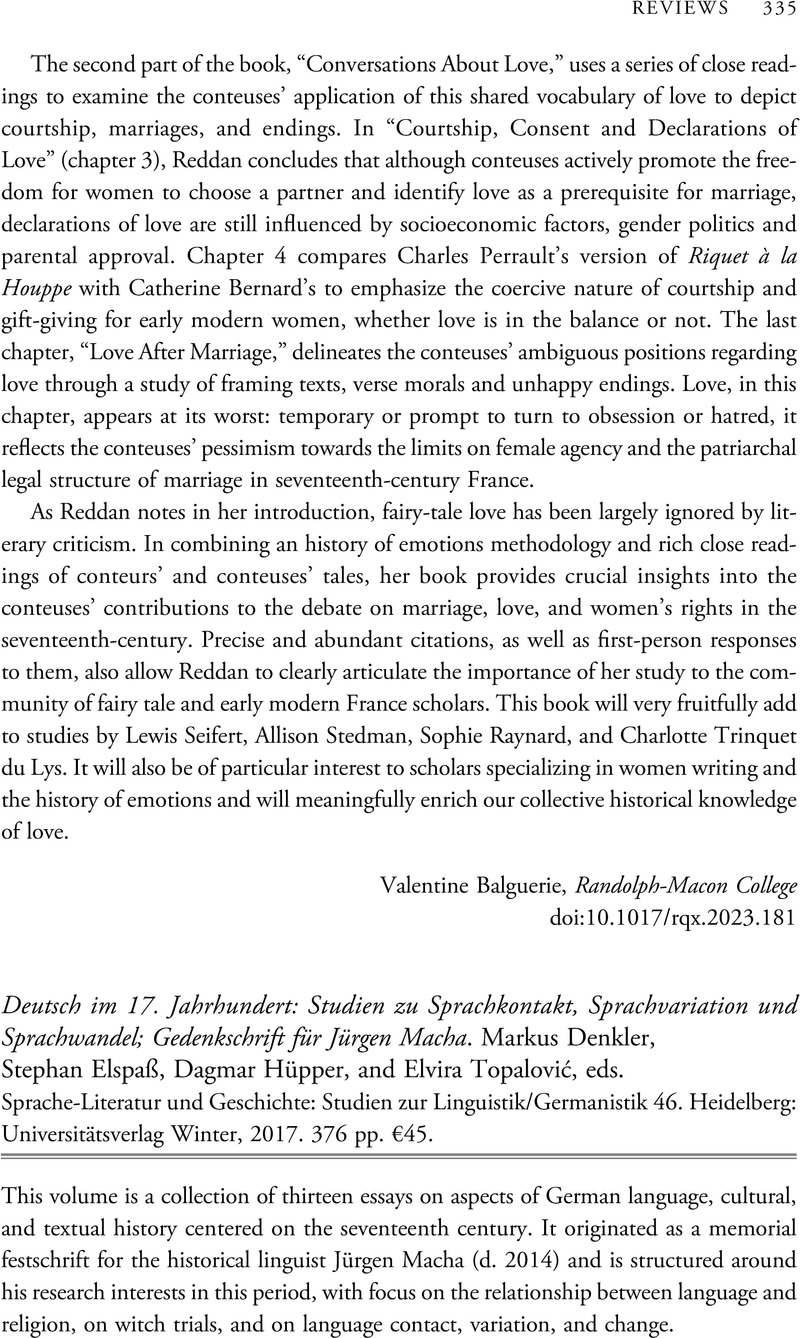No CrossRef data available.
Article contents
Deutsch im 17. Jahrhundert: Studien zu Sprachkontakt, Sprachvariation und Sprachwandel; Gedenkschrift für Jürgen Macha. Markus Denkler, Stephan Elspaß, Dagmar Hüpper, and Elvira Topalović, eds. Sprache-Literatur und Geschichte: Studien zur Linguistik/Germanistik 46. Heidelberg: Universitätsverlag Winter, 2017. 376 pp. €45.
Review products
Deutsch im 17. Jahrhundert: Studien zu Sprachkontakt, Sprachvariation und Sprachwandel; Gedenkschrift für Jürgen Macha. Markus Denkler, Stephan Elspaß, Dagmar Hüpper, and Elvira Topalović, eds. Sprache-Literatur und Geschichte: Studien zur Linguistik/Germanistik 46. Heidelberg: Universitätsverlag Winter, 2017. 376 pp. €45.
Published online by Cambridge University Press: 17 April 2023
Abstract
An abstract is not available for this content so a preview has been provided. Please use the Get access link above for information on how to access this content.

- Type
- Review
- Information
- Copyright
- Copyright © The Author(s), 2023. Published by the Renaissance Society of America



